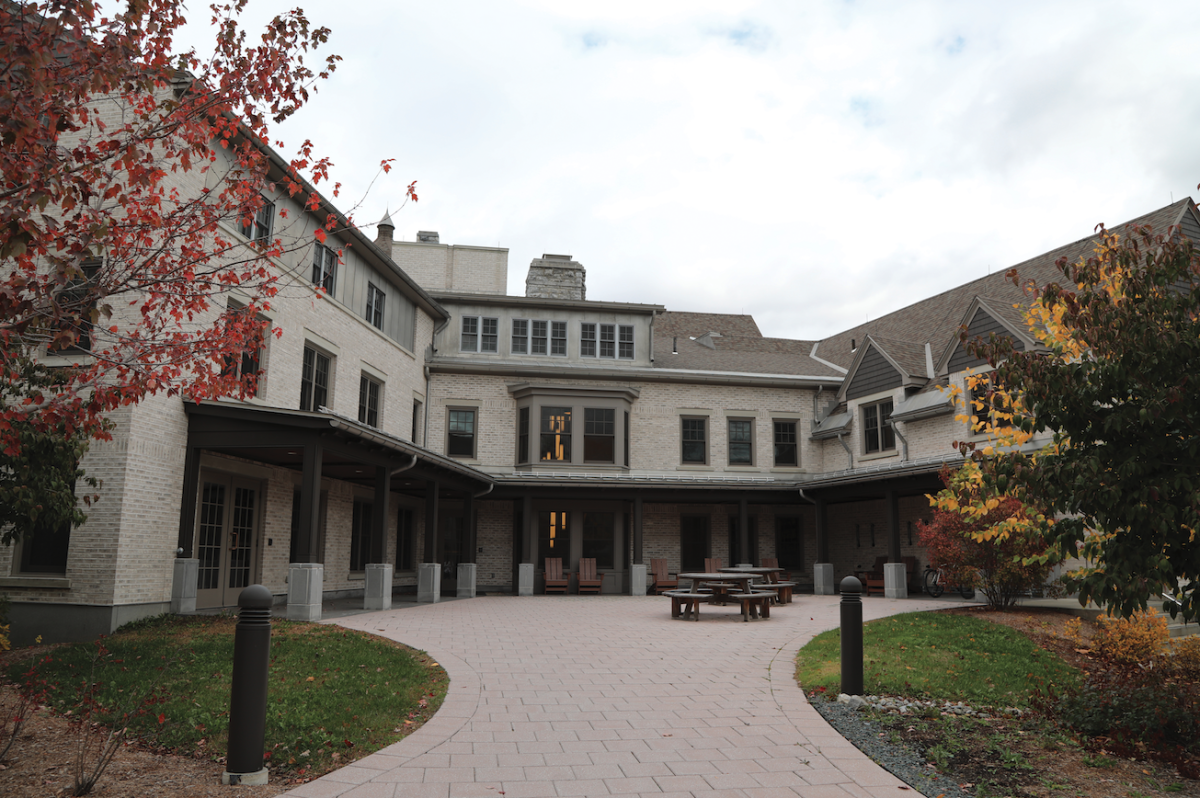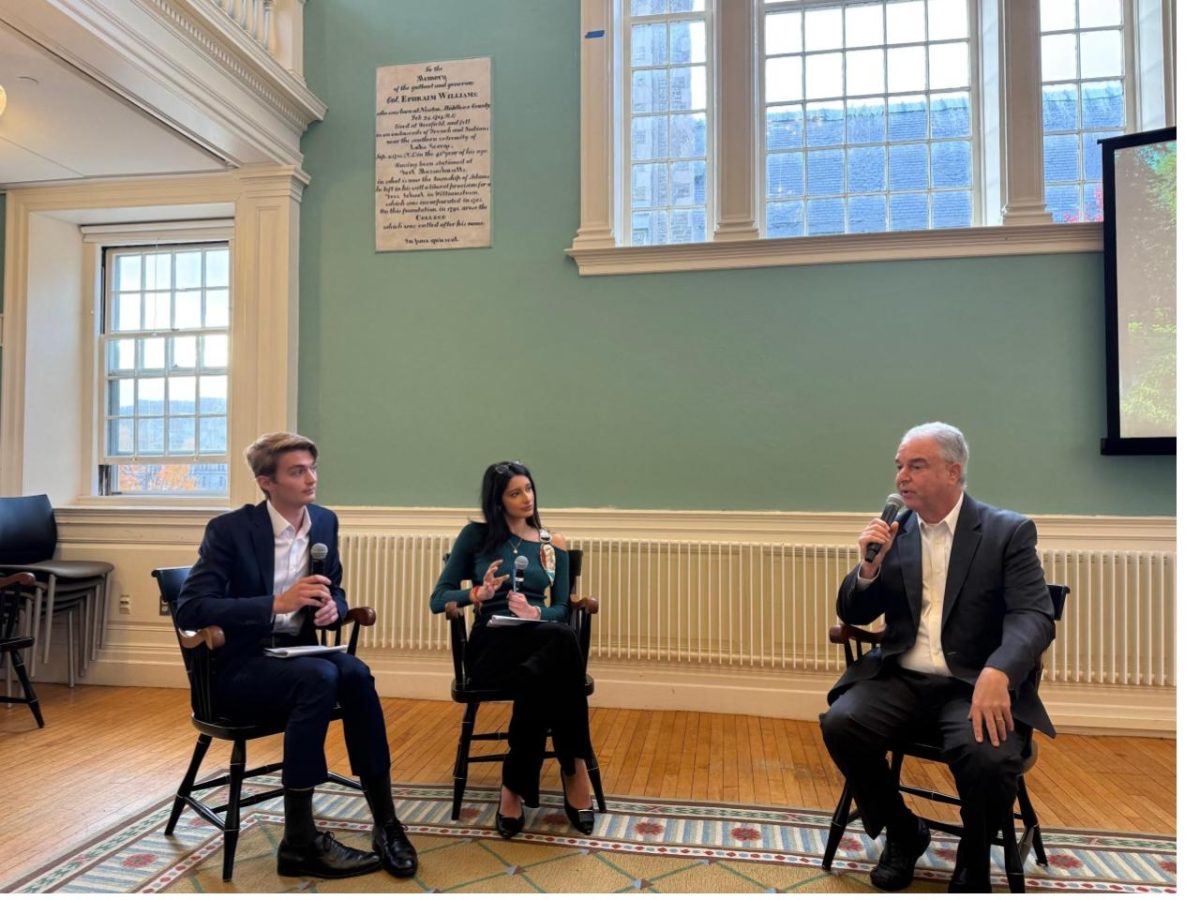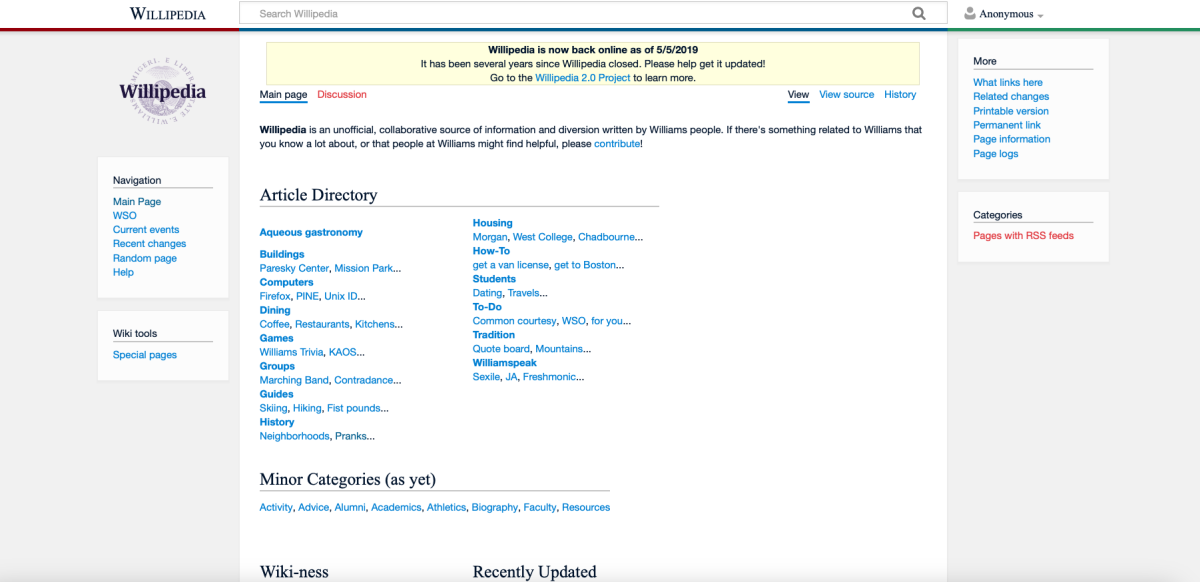
In the weeks preceding the College’s June 29 announcement of its plans to convene in person this fall, working groups and faculty worked to modify the College’s academic structure to best navigate a semester that presents unprecedented challenges for students and faculty alike. Still, as September grows closer, there are many unknowns about exactly what classes will look like.
In light of the COVID-19 pandemic, a portion of students will study remotely and complete an entire term online for the first time in college history. Those who do choose to live on campus will also experience a very different campus environment from recent years. Office hours, student research and mid-semester exams will all take on modified forms, mainly aspects of which still remain largely unclear.
Despite significant uncertainties, the College has already implemented several key policy changes for the coming year.
Following the May 19 announcement that students will only be required to take a minimum of three courses per semester and Winter Study classes will not take place, the faculty voted to allow students to designate as many courses as pass/fail as they wish without depleting their usual three pass/fail courses allowed. Students will have until the last day of classes to do so, and they can use a pass/fail course to fulfill their divisional, Writing Skills, Quantitative Skills and Difference, Power and Equity requirements. Departments will decide individually if students can use pass/fail courses to fulfill major requirements.
Pre-registration will begin in mid-August, more than four months later than originally scheduled.
“We will be encouraging incoming first years and rising second years to meet virtually with their faculty advisors in early August,” said Dean of the College Marlene Sandstrom. The full course-catalogue is also set to be released in early August, though a “Sneak Peek” of the offerings is available now.
Pre-registration will first be open from Aug. 10-17, during which students will be able to indicate their preferences for three courses. Between Aug. 26 and 30, students will have the option of adding a fourth course. Other changes and the addition of fifth courses can be made during the usual drop/add period, which will be Sept. 8 through Sept. 18.
Three different types of classes will be offered to students: hybrid, remote and multi-section. Hybrid courses will be taught partially in person, but will also have online components in order to remain accessible to remote students. Courses labeled as remote will be entirely online. Many of the College’s large lectures are designated as multi-section courses, meaning that there will be both hybrid and remote sections offered. After Thanksgiving Break, all classes and exams will be moved entirely online for all students.
At their June 17 meeting, the faculty voted to adjust the College’s class-hour schedule for the coming semester, should students return to campus. In order to accommodate sanitation protocols and avoid overcrowding, there will be 30-minute time slots between the consecutive occupancy of any classrooms, compared to the usual 10 minutes. This will lengthen the academic day, which will now start at 8 a.m. EDT and stretch past 4:30 p.m. EDT for most students. Additionally, evening class blocks will be offered four nights a week.The faculty also suspended division of the day, a policy that dictates that no classes can be scheduled between 4 p.m. and 7 p.m. EDT to allow for athletic and extracurricular participation.
Labs and three-hour weekly class meetings will be shortened and eliminated, respectively, to avoid extended periods of indoor instruction, as has been advised by public health professionals. Lab courses will meet for a maximum of two hours, according to Chair of Chemistry Sarah Goh and Chair of Biology Lois Banta.
Out of the 490 courses listed on the College’s “Sneak Peek,” approximately 45 percent are designated as remote, while 48 percent are hybrid and 7 percent are multi-section.
Because individual faculty members have elected to teach in a hybrid or remote format, the ratio of in-person to online courses varies greatly between departments. The English department, for example, is offering 24 of its 27 courses remotely, while Asian Studies is offering all 18 of its courses in a hybrid format.
Incoming Chair of English Bernie Rhie addressed the relative lack of in-person offerings in a post on the department’s website. Rhie, who will be teaching in the hybrid format, expressed that he is “very glad to be teaching at an institution that has given my colleagues and me the freedom to decide for ourselves what is best for each of us.”
He noted that several of his friends who teach at peer institutions were facing administrative pressure to resume in-person instruction. “Imagine being taught in person by a professor who you worried might not actually feel safe being there?” he wrote in the post. “That would be awful, wouldn’t it?”
There are many different factors that influence this decision for faculty members, many of whom have health and personal concerns about returning to campus. This includes Chair of History Anne Reinhardt, who will teach her classes remotely this fall.
“I have concerns about health and safety given the lack of progress against the virus nationwide,” she said. “I also don’t know if the public schools my children attend will be open — and if so, in what capacity — in the fall. Finally, I felt that I had a better chance at offering high-quality teaching if I could design remote courses from the outset … rather than having to build remote options and possibilities into an in-person course.”
The format of many classes may be adapted to accommodate remote and hybrid learning. According to incoming Dean of Faculty Safa Zaki, some professors have indicated plans to hold tutorial-style discussions instead of whole class seminars, while others are breaking up their large lectures into smaller discussion groups.
History course caps have been lowered across the board “ensure quality of teaching across new formats,” Reinhardt said. The department’s 100-level seminar courses, for example, will be capped at 12 students, instead of the usual 19. Many departments across all three divisions are implementing similar policies.
Zaki emphasized, however, that none of these are a one-size-fits-all solution. “The kinds of changes faculty will make to their courses will largely depend on the discipline and the particular pedagogical approach that the professor plans to take,” Zaki said. “There are many ways that faculty have restructured their offerings to adapt to the way we will teach in the fall.”
What in-person class time may look like:
While the fall semester will mark the reintroduction of some in-person classes, they will differ from those before the pandemic in some key ways. Most notably, students and faculty will be required to remain socially distanced and wear masks for the duration of all class meetings. Changes to in-person course enrollment limits and classroom usage will be made in order to account for these measures. Students will no longer be able to study in empty classrooms, to ensure spaces remain sterilized and available between class meetings.
In-person labs will not only be shortened but also modified procedurally to allow for social distancing. Lab enrollment sizes will be smaller than usual and professors will instruct students from several feet away. According to Banta, there will be no off-campus field labs that require vehicular transportation.
Because every hybrid course will contain both remote and in-person students, there will also be built-in flexibility to transition from in-person to remote instruction, should a student or professor need to quarantine or self-isolate following exposure to COVID-19.
It is not yet clear exactly what these hybrid courses will look like, as the logistics of combining the two modes has largely been left up to individual professors, but the “Sneak Peek” course catalog suggests that “[l]ectures might be pre-recorded and accessed asynchronously, and supplemented with discussion sections that could be attended in-person or remotely.”
There is the possibility, however, that a multi-section course could offer an exclusively in-person section, as well as hybrid or remote ones. While most departments in divisions one and two are offering very few, if any, multi-section options, several division three departments, including mathematics/statistics and computer science, will offer their larger lectures in this format.
What remote class time may look like:
In her June 29 announcement, Mandel noted that, though the fall semester will involve a significant amount of remote instruction, online classwork this fall will look different than last spring. With more time to prepare and adapt their syllabi, faculty members plan to offer classes that better fit the virtual format.
While the College pushed faculty to employ solely asynchronous learning methods after the transition to online learning in the spring, the Working Group on Curricular Planning for Academic Year 2020-21 is now encouraging professors to incorporate some synchronous components into their classes, according to Zaki, the committee’s co-chair.
Goh attributed this change to student feedback indicating a preference for synchronous interactions. “Last spring, it was requested that we not require anything synchronous,” she said. “Student feedback, however, said that they would have appreciated more synchronous interactions, and so all of our classes have a synchronous component.”
Professors are also rethinking how they can modify lab and studio components to suit the remote teaching method. According to Banta, all biology courses that have a lab section will offer virtual lab sessions to remote students.
“In many cases, remote students will be involved in experimental design and data analysis, even if they are unable to participate physically in actually performing the lab procedures,” Banta said. “They may also have the opportunity to observe lab procedures that have been recorded.”
In an email sent to music students on Wednesday, Chair of Music Ed Gollin outlined how public health guidelines will impact music lessons and ensemble rehearsals. Students who can play their instruments while wearing a mask will be able to convene, provided they remain socially distanced.
“Where things get tricky is with voice, or wind instruments—instruments where it is problematic or impossible to wear a mask,” he wrote. “This is also where our plans are most in flux”
Voice students will likely take all their lessons online, regardless of whether they are on campus or not. There has yet to be a decision reached on if wind instrumentalists will be allowed to play in public spaces and practice areas, given that they socially distance and wear masks when not playing.
The College plans on offering to remote students the same kinds of support that are available to those on campus. “This will include academic resources (tutoring, writing workshop, library support) and accessibility support,” Sandstrom explained.
Ultimately, Sandstrom said, faculty and staff will work to provide all students with equal access to academic support both in-person and online. “We plan to offer robust support for students, regardless of whether they are on-campus or enrolled remotely,” she said.








